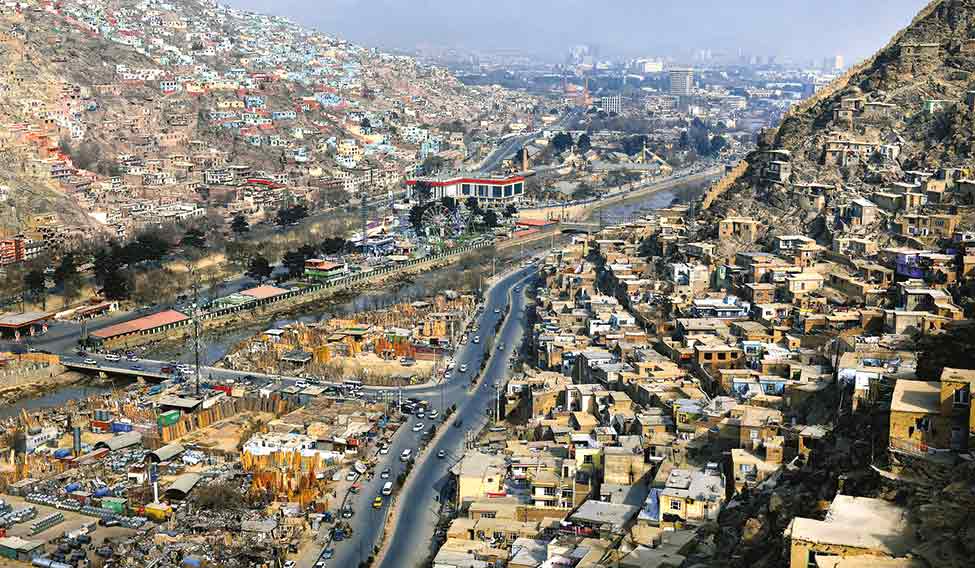On January 21, Omar Sadr got off his taxi at a roadblock and walked the remaining distance to work. In the foreground, he could see smoke billowing. The siege at Intercontinental Hotel was on. A cold dread gripped Sadr, a young researcher at the Afghan Institute of Strategic Studies. “I felt my life was under threat. I felt unsafe. And, I felt terror,” he said. Six days later, an ambulance exploded at a spot he had passed by only a few hours earlier. The toll is 100 and counting. “Luck and timing, that saved me,” he said.
Kabul is one of the most dangerous cities in the world, and every resident here has been exposed to terror, up close and personal. Everyone knows someone who was killed, or maimed, in a blast. Danger takes myriad forms. There is terror. There are bounty hunters, waiting to grab a ransomable prey. They are known to chop off and send bits of fingers and ears to frighten families and employers into paying up. Few have compunctions about bumping off a “worthless” victim. And, then, there are the petty thieves, driven by unemployment or drug addiction, who will kill for a few Afghanis. This is our life, we are inured to it, say residents.
Sadr’s resilience has weakened considerably, though. He has returned from a six-year stay in India, and he remembers his erstwhile residence in notorious Gurgaon as a safe haven in comparison with the chaos in Kabul. Sadr has returned with a wife, Rashmi Dangol, from Nepal, whom he met while studying at the South Asian University in Delhi. Rashmi—who got a job at the Afghanistan Centre at Kabul University before him, and happily joined her in-laws months before he moved back—seems to have adjusted rather well to Kabul. Sadr is wracked with fear, misgivings and guilt. This was his hell; has he jeopardised Rashmi’s life, too?
There are fresh intelligence alerts that Kabul University is a probable target and that foreign employees are under great threat. In fact, a new alert even warns of possible attacks in shopping areas frequented by foreigners. As with all intelligence warnings, the frustrating bit is that one seldom knows when, and exactly where.
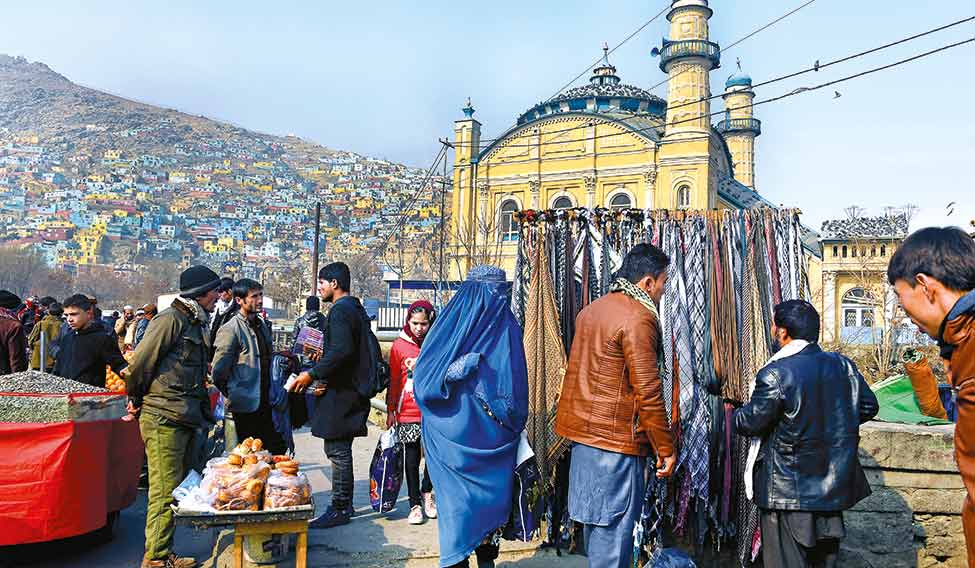 Business as usual: A bazaar in Kabul.
Business as usual: A bazaar in Kabul.
The security scene in Afghanistan has never been good in living memory, but the deterioration over the past three years is particularly worrisome. Ever since the US began withdrawing forces, matters have been spiralling downwards. “The T-walls are getting higher, the number of soft skin cars fewer,” said Noorjehan Mawani, diplomatic representative of the Aga Khan Development Network to Afghanistan.
The streets of Kabul are a maze of concrete barricades. There are T-walls, which are portable, steel-reinforced concrete blast walls that are 12-foot high. It is said the new 20-foot ones cost a thousand dollars apiece. At the more vulnerable areas, the police have set up “rings of steel”. Entry to government buildings and hotels are complicated processes, involving narrow openings between barricades, and numerous checks through metal detectors and security rooms made of four-inch thick, bomb-proof metal.
A parade of uniforms are on display everywhere—each police, military and private security personnel wielding nothing less than a lethal Kalashnikov. Showrooms for armoured cars have opened, and vehicles of the National Directorate of Security, the country’s premier intelligence arm, patrol the roads. Up in the sky floats a giant balloon, which local people say, is for surveillance.
None of these measures have lulled the city into feeling safe. The more the security, the worse the attack. Like the powerful truck bomb that went off near the German embassy last May, killing 150 and injuring more than 400. The city is studded with damaged buildings that no one has had the energy, or money, to rebuild.
 Enforcing order: A policeman waving children away from a secure area in Kabul.
Enforcing order: A policeman waving children away from a secure area in Kabul.
The latest attack on the military academy on January 29, a day that Afghanistan had set aside for national mourning, has left a country inured to mindless violence shellshocked. After the ambulance bomb attack on January 27, Kabul actually turned into a ghost town, as even the most resilient feared to step out. There is not much defence against a fidayeen attack. The suicide bomber is programmed to blow himself up the moment he is caught, never mind that the resultant casualties are not the intended target.
Though Taliban claims that it targets “invaders” and government officials, and not civilians (see interview on page 36), collateral damage is high. The January 27 attack is a case in point. “Every day, when I leave home for work, I bid my family farewell as if I may never return. I have no hope of seeing peace in my country,” said Mir Abdul Wahed Hashimi, who works with Internews, a nonprofit organisation that focuses on media solutions and research. “I remember my father listening to BBC Radio 35 years ago, when the Soviets withdrew. He said there would be peace now. Then we heard about the UN representative talking to the Mujahideen, and thought, now we would have peace. Instead, we got Taliban and more war. When technocrats returned, we thought, finally we would have peace. Taliban is still active, and Islamic State has entered Afghanistan. No, I don’t see peace anytime soon.”
Winter is usually a time of low terrorist activity, because that is when new recruits are sent to training camps in Pakistan, say local people. This winter has been different, though. There were three massacres in ten days in Kabul, and lethal explosions in Jalalabad, and Kandahar and Herat provinces. The Kabul attacks were so terrible that the nation declared a day of mourning. Sources say the situation will worsen as Afghanistan gets closer to its next general election, due in July this year.
The past three years have dealt multiple blows to the country. Apart from a worsening security situation, Afghanistan’s economy has been hit. With one lakh foreign soldiers gone, ancillary jobs for local people have dried up. The change in fortunes is starkly evident at Bush Bazar (named after the former US president), once a grey market for supplies pilfered from military stores, and hand-me-downs from the barracks. You could buy US army shoes, vests and an assortment of canned food there. Today, the market sells Chinese products.
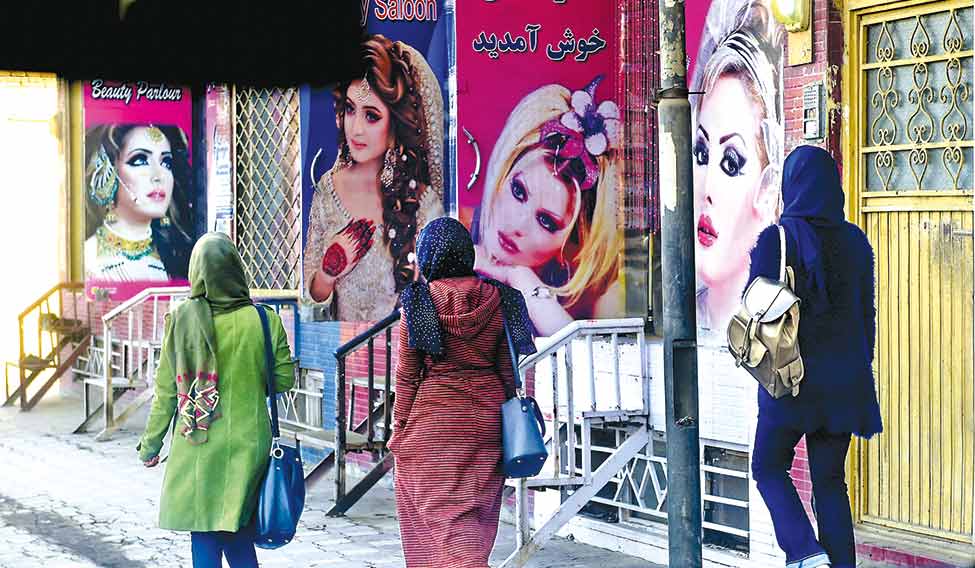 Bold and beautiful: Women walk a street in Kabul lined with beauty parlours.
Bold and beautiful: Women walk a street in Kabul lined with beauty parlours.
The US now has around 14,000 soldiers in Afghanistan, mostly noncombatants. President Donald Trump’s decision to step up presence again is yet to get rolling. With soldiers departing, several international aid organisations moved out, too, spurring further unemployment. Now, even a labourer’s vacancy attracts throngs of applicants elbowing each other.
A country barely able to deal with its injured, has little time or money for dealing with mental problems. Stress levels are high here, but terms like post-traumatic stress disorder are unheard of. Little wonder, then, that heroin addiction is on the rise, further fuelled by unemployment. The Pul-i-Sokhta bridge in Kabul illustrates this crisis. Below it, addicts, dishevelled, dazed and dangerous, smoke and inject themselves, while locals lean over the bridge to watch the horrible sight. Opium cultivation is on the rise in southern provinces like Helmand. Opium funds terror.
There aren’t many statistics to come by in a country where surveys are low priority. But, the upsurge in the out-of-Afghanistan exodus is evident. Sadr remembers his circle of friends, named Giroh-e-guftagu, who used to gather for poetry sessions six years ago. Only a few are still around; most have left for the US or Europe.
“I’ve seen couples who were doing well here, leave for menial jobs in the west. It is really sad,” said Rashmi. Those who can, take scholarships abroad, and try to remain there. Others cross over to Iran and then move illegally westwards, seeking asylum in countries like Germany and Sweden. Many are deported; they try again.
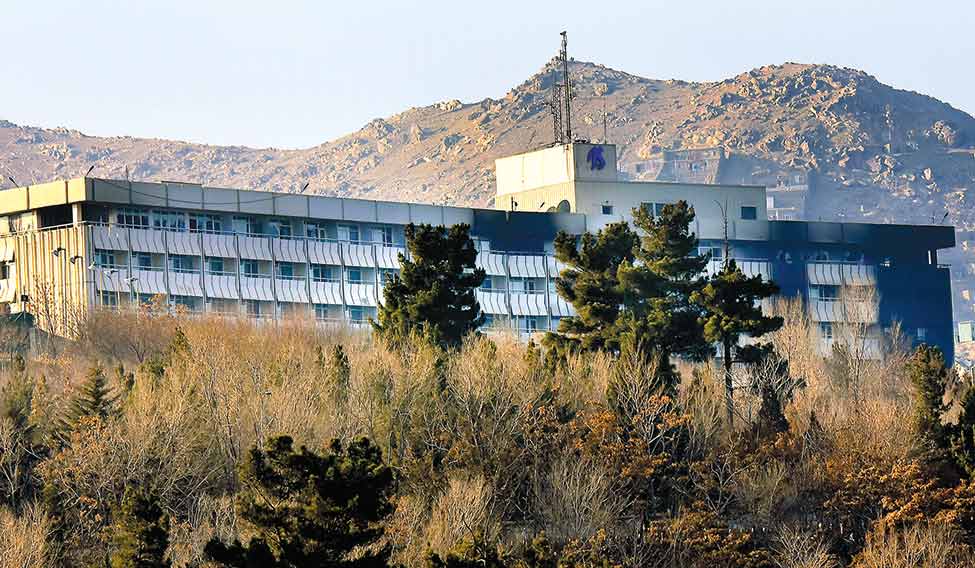 Intercontinental Hotel, after the January 20 attack.
Intercontinental Hotel, after the January 20 attack.
As if the incessant violence is not bad enough, Afghan society is still cleaved sharply on ethnic lines, with distrust for each other. Pashtuns are the largest ethnic group. Then come Tajiks and Hazaras, followed by at least 12 major groups like Turkman, Uzbek and Khorasan, and even the last of the Sikhs, Hindus and a lone Jew.
In the nascent democratic set up, identity politics plays out in an ugly form. Hazaras are no longer the suppressed people. Their years as refugees in Iran and Pakistan gave them access to education and new ideas. The community is on the upswing—Hazara students are usually the examination toppers. The Tajiks, always a proud and educated people, do not let anyone forget how it was their dominion, Panjsher, which was the frontline of the resistance to Taliban. The only safe road trip from Kabul is to Panjsher. It is a big thing in a country where the government has control over only 60 per cent of the area—the rest is still Taliban territory.
The centre’s tenuous control over the land is well illustrated by Atta Muhammed Noor, who has refused to step down as governor of Balkh province, though all provincial governors were fired when President Ashraf Ghani took over in 2014. An ethnic Tajik, Noor is wealthy and hugely influential. He is also extremely popular, thanks to his good governance. Elsewhere, too, local warlords call the shots.
The proposal to issue a national identity, or Afghan card, has become a vexing issue. The problem is that the word Afghan is interchangeable with Pashtun—something not acceptable to others. “Parliament has now accepted the proposal that after Afghan nationality, the card will also give the person’s ethnicity and religion,” said Anarkali Kaur, a senator in the upper house of parliament.
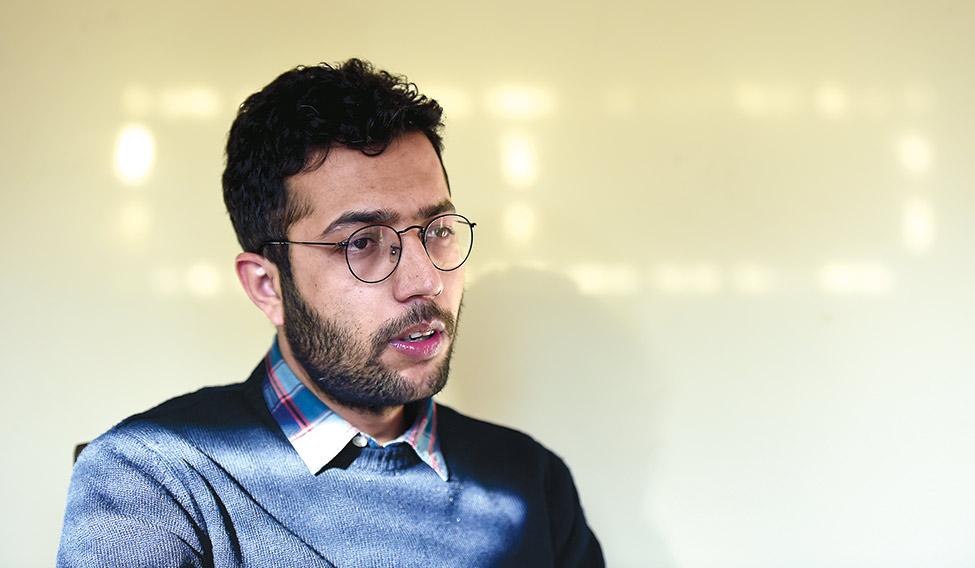 Omar Sadr
Omar Sadr
But, the matter will not be easily resolved. Because, apart from the main ethnicities, there are several subgroups, cataloguing all of which will seem like a taxonomy chart. “Why can’t we be like India, where so many different people live together, and yet, proudly call themselves Indians,” asked Mina, an undergraduate student at Kabul’s American University.
Said Mawani: “The biggest risk to a country is ethnicisation of politics.” She, however, pointed out that there were two ways of looking at Afghanistan. Admittedly, the security scene is deteriorating, but the country has made progress on several demographic parameters. “Fifteen years ago, there was no concept of a doctor in Bamyan,” she said. “Today, it has an ISO-certified hospital. Kabul’s FMIC hospital even has a neonatal surgical unit and, what’s more, Afghan doctors are now running the show.”
Mawani said that, in the initial post-Taliban years, the focus was on numbers—school enrolments, for instance. The attention is now gradually shifting to quality, too.
It is a difficult journey for Afghanistan. For every single step it takes towards progress, it is pulled back ten. A new script of geopolitics is playing out in the country, where almost every country in the world wants to have a role. The US, having fought a weary 16-year war, wants out; yet, doesn’t want to be out.
Ghani said that without American help, the Afghan military would last just six months. Russia feels that engaging with Taliban is the route to peace. For the Afghan people, however, peace and security remain a mirage. Will they ever achieve it? “Peace is a process,” said Kaur. “We are all working towards it. It may take time, but one day, we will get it. Look at Sri Lanka. They managed, didn’t they?”



